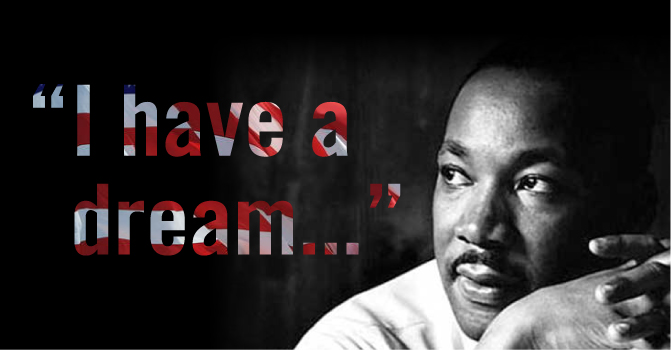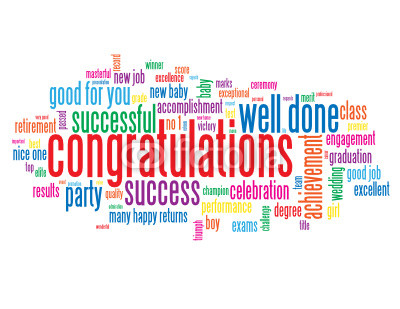Introduction
On August 23, 1963, Martin Luther King Jr gave his famouse "I Have A Dream Speech". Imagin being back in his time what it was like, and what he & others went through. What you will do is read the speech, and watch a video. You will also answer questions, and write a news report. At the end you will fill in the blanks, and take a test.. Good Luck!!
Task
Reading Activity: Multiple choice questions
Social Studies Activity: Answer questions about Martin
Art Activity: Draw a picture of the seen
English Activity: Right your own speech.
Process
Reading Activiy
You will now read the "I Have A Dream speech." copy the link below and read the speech.
http://www.med.umich.edu/diversity/pdffiles/1%20January/January%20I%20h…
Now that you have read the speech you will answer these following questions.
1. Martin Luther King, Jr. uses the image of “the valley” to represent
A. justice
B. bad times
C. the future
D. peace
2. The main focus of Dr. King’s speech is
A. getting more money for America’s black population
B. convincing everyone to live in peace and tranquility
C. celebrating the anniversary of the Emancipation Proclamation
D. ending segregation and racial injustice in America
3. In paragraphs four and five, Dr. King uses an analogy to illustrate America’s broken promise of life, liberty, and the pursuit of happiness to “her citizens of color.” What is this analogy?
A. A promissory note--a check that has come back marked “insufficient funds”
B. A dark empty well with a bottomless bucket tied to a frayed rope
C. A crossroads in a dark forest
D. A vast stretch of sand occasionally interrupted by lakes--which prove to be illusions
E. A recurrent nightmare
4. Martin Luther King, Jr. appeals mainly to his listeners’
A. common sense
B. desire for a better future
C. sense of guilt
D. concerns about America’s status among the world’s nations
5. In “I Have a Dream”, Dr. Martin Luther King, Jr., urges his followers to
A. work toward gradual change
B. demand equality and justice now
C. use any means necessary
D. distrust white people
6. Which repeated phrase in Dr. King’s speech has additional power because it is from a familiar patriotic song?
A. “I have a dream”
B. “Now is the time to”
C. “One hundred years later”
D. “Let freedom ring”
6. Dr. King’s speech does not incorporate
A. repeated phrases
B. quotations from songs
C. thanks to distinguished guests
D. references to the Bible
7. Dr. King is convinced that
A. dreams rarely become reality
B. the struggle must continue
C. equality has been achieved
D. justice is a privilege
8. How did Dr. King appeal to his audience?
A. He compared them to children
B. He appealed to their sense of justice, fair play, and patriotism
C. He reminded them of the homeland from which they have come
D. He made them angry about their history by repeatedly referring to slavery
9. Which phrase is NOT repeated for effect during the speech?
A. Let it/freedom ring
B. …the content of their character
C. I have a dream
D. Go back to…
E. We cannot be satisfied
F. One hundred years later
10. In the second paragraph of the speech (beginning "Five score years ago . . ."), which extended metaphor does Dr. King introduce?
A. Life as a journey
B. Highs (mountains) and lows (valleys)
C. Life as a dream
D. Light (day) and darkness (night)
E. Life as a daydreamer’s doodles on a sheet of paper
11. By linking the occasion of his speech to the Emancipation Proclamation and by using biblical language (reminding listeners that he is a minister), Dr. King defines his personal authority, thus helping to establish
A. a new church in Washington, D.C.
B. his ethos or ethical appeal
C. a much needed distraction from the more serious parts of the speech
D. an excuse for giving a lengthy history lesson
E. a new political party in the United States
12. In paragraph nine of the speech (beginning "The marvelous new militancy . . ."), Dr. King says that "many of our white brothers . . . have come to realize that their freedom is inextricably bound to our freedom." Define the adverb inextricably.
(a) unable to be excused or pardoned
(b) unable to be separated or untied
(c) unable to be solved or explained
(d) carefully or thoughtfully
(e) painfully or harshly
13. In paragraph 11 of the speech (beginning "I am not unmindful . . .), Dr. King addresses those in the audience who have been unjustly imprisoned and who have been "battered by . . . police brutality." What advice does Dr. King offer to these people?
A. Seek revenge for the way you have been mistreated
B. Succumb to despair
C. Return home and continue to work for justice
D. Recruit lawyers and sue your local police departments
E. Pray that God will forgive those who persecuted you
14. Toward the end of the speech, in the paragraphs beginning with the now-famous phrase "I have a dream," Dr. King mentions certain members of his own family. Why does he do this?
A. To connect with his audience as a fellow parent and have them think of their own children
B. To show everyone how well he has raised his children
C. To get the white members of the audience to feel guilty for how they treated his children
D. To have a reason to bring his children to the speech
15. Why did Dr. King quote “My country, ‘tis of thee”?
A. To make a patriotic appeal to his audience
B. To introduce his quote from the Pledge of Allegiance
C. To get everyone in the mood to hear his thoughts on politics
D. To provide a smooth transition to the next performer, who was a singer
E. To balance out the Bible verses he previously used with some non-religious references
16. At the end of his speech, Dr. King repeatedly calls out, "Let freedom ring." Which is NOT a reason why he did this?
A. To emphasize that his speech is about freedom, justice, and equality, not just politics
B. To help him to show that freedom needs to come from all areas - not only from the North but also the South
C. To show that African-Americans were asking only for freedom, which was given to other citizens, and not special privileges
D. To appeal emotionally to his audience
E. To get the crowd involved by having them sing along
17. Which of the following metaphors does Dr. King NOT use?
A. He compares segregation to manacles, discrimination to chains, and poverty to a lonely island in the middle of an ocean of prosperity
B. He compares segregation to a desolate valley, racial justice to a sunlit path, racial injustice to quicksand, and brotherhood to a solid rock.
C. He compares injustice and oppression to heat, and freedom and justice to an oasis
D. He compares the current disagreement in the country to jangling discords, and brotherhood (a stop to the disagreement) to a symphony.
E. He compares African-Americans to slaves, and all other races to slave owners
Social Studies Activity.
Look on Google to find the answer to the questions below.
- Where was Martin Luther King Jr born?
- What year was he born in?
- When did he die?
- How many kids did he have, and what were their names?
- What day did he die on?
Art Activity
Draw a picture of the seen around the reflection of the pool while he was giving his speech
English Activity.
Right a speech about an equal right subject using some lines from the "I have a dream" speech, and present it to the class
Evaluation
Reading Activity: Multiple choice questions, 2 points per question correct
Social Studies Activity: questions 5 points
Art Activity: Timeline 11 points
Conclusion
 Congratulations!! You have completed my webquest. You have now earned your 20 minute free time.
Congratulations!! You have completed my webquest. You have now earned your 20 minute free time.
Credits
This webquest would be a great supplement to teach about "Black History, & Civil Rights" lessons. Thank You for choosing my webquest, I hope you enjoy it!!
